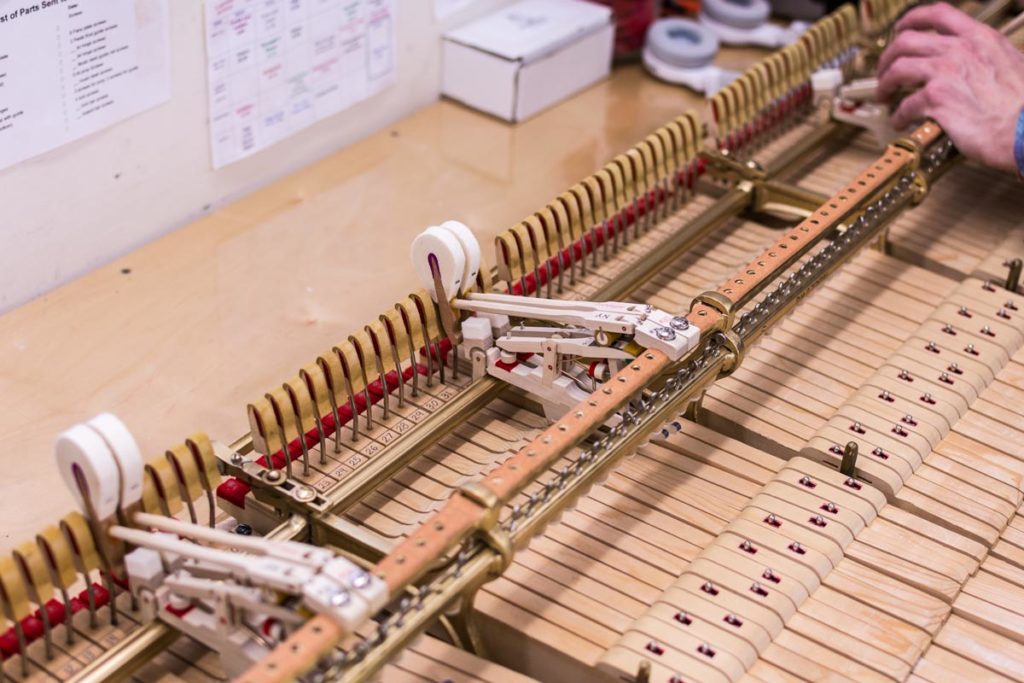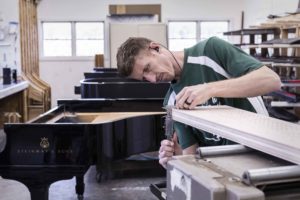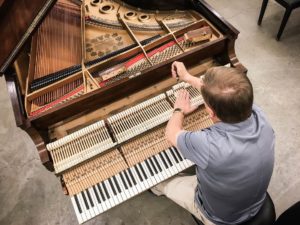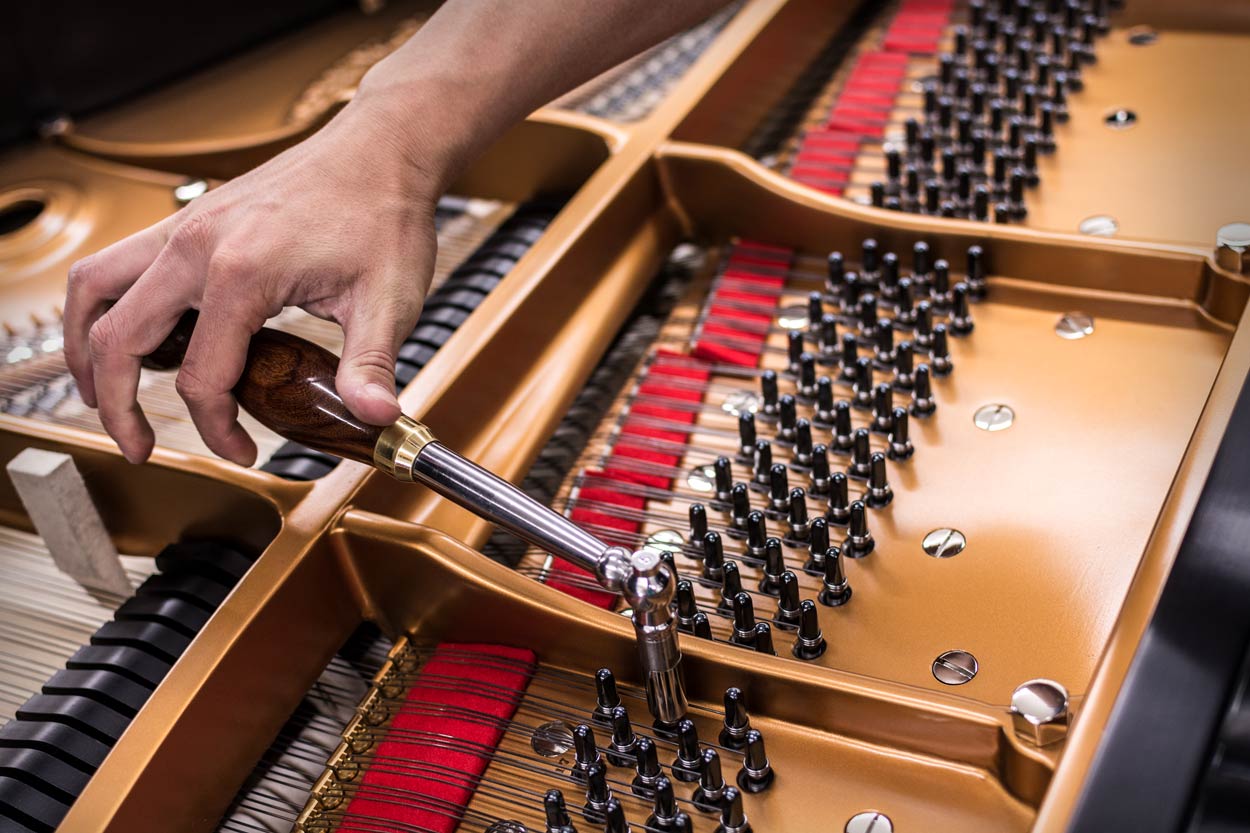
“Beauty cannot be measured, you see. It must be perceived.”
The following paragraphs are taken from an article by Lili Földes entitled The Other Masters of the Keyboard, published in the 1970s. Through the experience of being married to a concert pianist (Andor Földes) and the keen eye of a journalist, Mrs. Foldes pulls back the curtain on the unsung artists of the keyboard – and the rest of the instrument we know as the piano.
“Shortly after I married my concert-pianist husband, a dapper man carrying a small tool kit came to our apartment. Spreading his instruments near our concert grand, he began hitting each key over and over with one hand, while adjusting the piano’s insides with the other. After well over an hour of ping, ping, ping, he began playing but only broken chords, fragments of famous pieces. Then he declared the instrument in good order and left. Poor man, I thought. He couldn’t become a pianist, so he settled for the mechanical job of piano tuner.
Now I know better. I have learned that piano technicians, as they are correctly called, are a remarkable breed of craftsmen, practicing a unique and exacting profession that takes five years to master. And they are in desperately short supply. Small wonder. Some 700,000 pianos are sold worldwide every year, ranging from $1500 uprights to $20,000 concert grands. And the average family piano should be but rarely is tuned every three months. Professional instruments require attention before every performance.”
“Tuning always begins in the center of the keyboard, with middle A, whose vibration frequency is established at 440 double vibrations per second. The tuner knocks his steel tuning fork gently against his knee and, with ears cocked like a gun dog’s, he turns the tuning pin of the middle A string until its vibrations match those of the fork. He then tunes the rest of the strings into a harmonious unity of sound.
Regulation of the piano’s action requires that each key move exactly 9.5 millimeters before the hammer strikes the strings. If one key is off by as much as the thickness of a sheet of paper, the entire balance of the keyboard could be upset.
Voicing, or adjusting tone volume and color, is the most difficult of all, for a good tone regulator must be able to “imagine” a beautiful tone with the mind’s ear. Tone quality depends on things like the force of the piano’s action and, above all, the hardness or softness of the felt covering the hammers.
When the felt is new or after it has had strenuous use, it is sometimes too hard. This mars the piano’s tone, and the felt must be made more elastic by puncturing it with a threepronged instrument. It is an exacting and risky art. Puncturing the felt a fraction too deeply, or too much to one side or the other, can ruin the piano’s tone.”
 “Technicians tend to think of pianos in warmly human terms. “It’s like taking a newborn baby in your hands,” master technician Franz Mohr of Steinway‘s New York headquarters told me, describing his feeling when he receives a newly finished piano for voicing. Matthias Barth, now head technician for the renowned Juilliard School of music, dance, and drama, says that he can identify the voices of most of the 220 Steinways he tends. He is on “first name terms” with them all, as he puts it, and takes boundless pride in keeping them in top shape.
“Technicians tend to think of pianos in warmly human terms. “It’s like taking a newborn baby in your hands,” master technician Franz Mohr of Steinway‘s New York headquarters told me, describing his feeling when he receives a newly finished piano for voicing. Matthias Barth, now head technician for the renowned Juilliard School of music, dance, and drama, says that he can identify the voices of most of the 220 Steinways he tends. He is on “first name terms” with them all, as he puts it, and takes boundless pride in keeping them in top shape.
‘You need many qualities to be a top piano technician,” Bob Glazebrook informed me. “But I always think of two as essential: the nerves of a high-wire artist and the patience of a brooding hen.'”
“‘Will machines ever replace piano technicians?’ I asked Kurt Albrecht, the maestro who has tone-regulated some 30,000 pianos. “Electronic devices can easily measure vibration frequency,” he replied, “but no mechanism ever will be able to accurately measure tone color.” He looked at me across the frame of a piano he was working on. ‘Beauty cannot be measured, you see. It must be perceived.'”
Chupp’s Piano Service, Inc. – Piano Restoration – Vintage Steinway & Other Fine Pianos for Sale
Comments are closed







